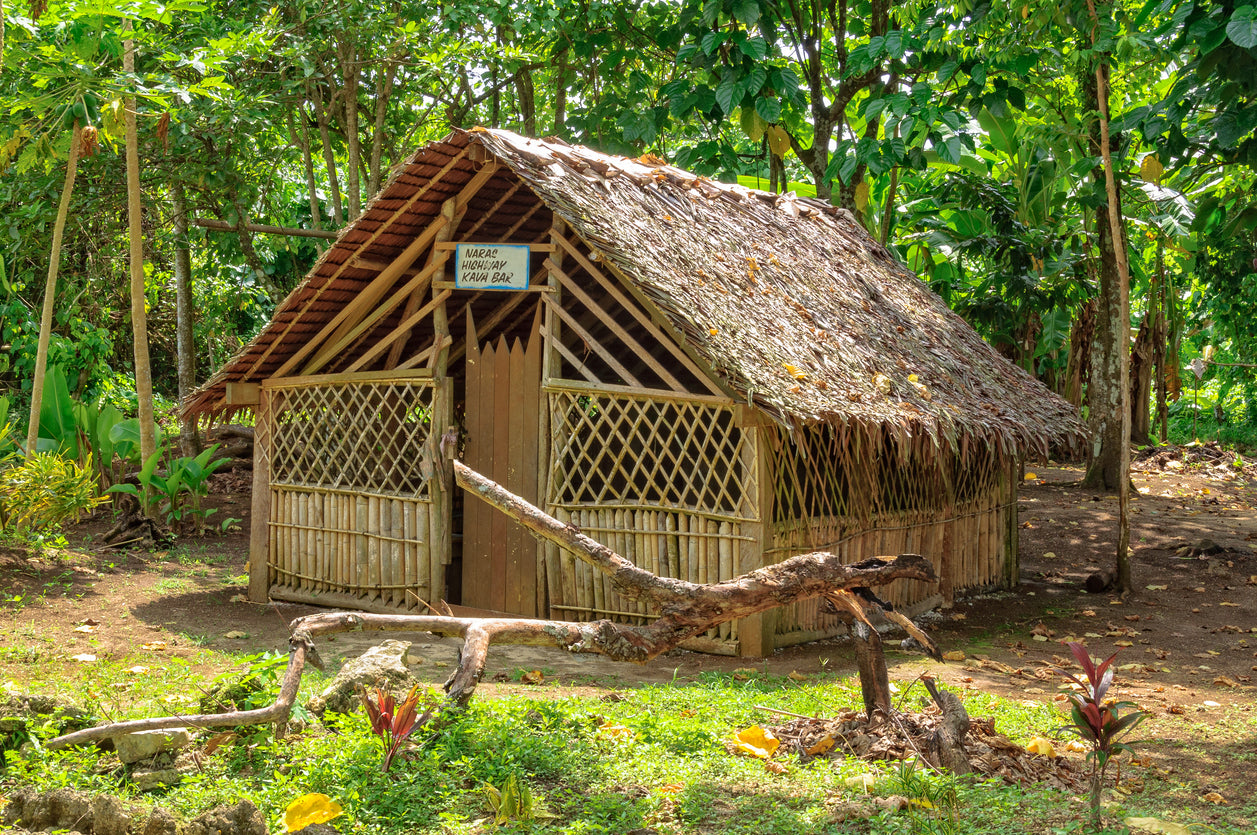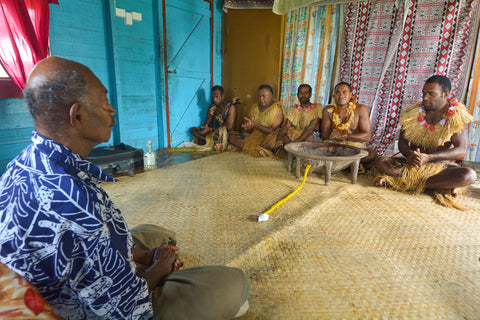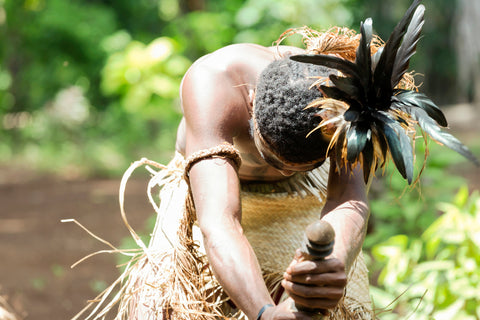
Kava varies from region to region within the Pacific Islands. All regions treasure the piper methysticum plant, in which its roots are used to create kava. However, these kava strains differ based on where the kava is cultivated.
Kava’s name also varies among regions and different kava strains. Awa is the name for kava in Hawaii. Yaqona is its name in Fiji, while Malok is how some in Vanuatu refer to kava.
Just like the name can vary, so can cultivation methods. Therefore, some kava drinks offer different effects than others. In addition, the chemotypes and kavalactone numbers can help us identify where the kava was likely cultivated.
Chemotypes and Kavalactones
In kava plants, chemotypes are differentiated by kavalactones. These are the chemical compounds that make up the chemotypes in the kava plants.
When kavalactones are soaked in water, their psychoactive elements are released. When consumed, a person can experience relaxation while maintaining mental clarity.
To date, there have been eighteen kavalactones identified. However, only six of them are associated with giving the beneficial effects to those who consume it. The order in which they are combined determines the effect they will give the user.
The six common kavalactones associated with giving you the euphoric and calming affects you desire are: desmethoxyyangonin, dihydrokavain, yangonin, kavain, dihydromethysticin, and methysticin.
When choosing which kava strains you prefer, it's important to understand how each strain will affect you. Stick with those that have the numbers “2”, “4” or “6” in the beginning of the chemotype variety.

Fiji Kava
Yaqona in Fiji is pronounced Yan-go-na and is considered by natives to be a plant given to them by the Gods. Only the best strands of kavalactones are extracted from yaqona and they are only taken from the root of the plant.
Lateral roots are used in producing Fiji kava, making it one of the most concentrated kava strains.
Benefits of yaqona are that it contains a large amount of fiber, making it a healthy drink for digestion. It also gives you the positive effects that alcohol may give you, but without the negative effects of alcohol. For instance, you will feel relaxed, but will not have a hangover.
Kava in Fiji develops a tan color, have a hint of pepper taste and is said to have a creamy texture. It is known for is stress-relieving effects that take the edge off but not so much that you feel sedated and unable to function.
Vanuatu Kava
Harvesters cloned parts of the piper plant families to form what is known today as the piper methysticum plant. Travelers took strands of the plant to other islands in the South Pacific, each creating their own version of kava.
Vanuatu remains the leader in having the most varieties of kava strains. They have more varieties of kava than anywhere else in the world.
Kava grows best in loose soil so that air can reach the roots. The plants themselves prefer good rainfalls and a lot of humidity. Kava is propagated by stem cuttings since it cannot reproduce on its own. At least four years goes by before it is ready for cultivation.
Even though it is grown on sunny islands in the Pacific, the piper methysticum plant prefers shady areas. A popular version of Vanuatu kava is called melo melo and often people drink this variety before parties. Melo melo is known to ease nerves while also giving you energy.
In Vanuatu, the chemotype sequence mostly likely begins with a “2” and a “6” or “5”.

Hawaiian Kava
Kava is called awa in Hawaii. Most tea is made using the fresh root of the plant. Sometimes the root is sundried and used later. It is chopped into small pieces and pounded into a powder like form. Awa is then mixed with water and strained. In the beginning, awa was chewed to mix with saliva, then spit into a bowl.
The strained liquid is what Islanders consume. Sometimes the awa is put in a kalabash and warmed over hot stones, then cooled again before drinking.
Harvesting the awa root after a rain makes it easier to remove from the ground.
Kava likes to grow on the side of a hill but not on the top. The stalk can be cut into sections and planted right side up, with most of the cane being beneath the moist earth, in a shady place. Kava cuttings are planted for a few months until the cuttings have roots showing. They are then transplanted into pots as it grows to a large enough size to be transplanted directly into the ground.
Chemotypes that begin with a “4” and “6” are usually kava strains cultivated in Hawaii. This means that Hawaiian kava has kavain and methysticin. From there you can determine that this strand will help you feel relaxed but also make you interested in socializing due to feelings of being happy.
Tongan Kava
Tonga, just like the other regions, have multiple varieties of kava. One of the most popular kava strains from this area is said to have a nutty flavor. It’s called Fu’u and offers a creative and social effects. The kavalactone lineup of this variety begins with 4,6 and 5.
Other versions of kava in Tonga are labeled due to their color, like Tongan White. It is considered creamy with a smooth taste.
Many people drink this type of kava to relax at the end of the work day while remaining alert and functioning.
By understanding the different chemotypes of kava, you can determine which kava strains are best for you. BULA!
